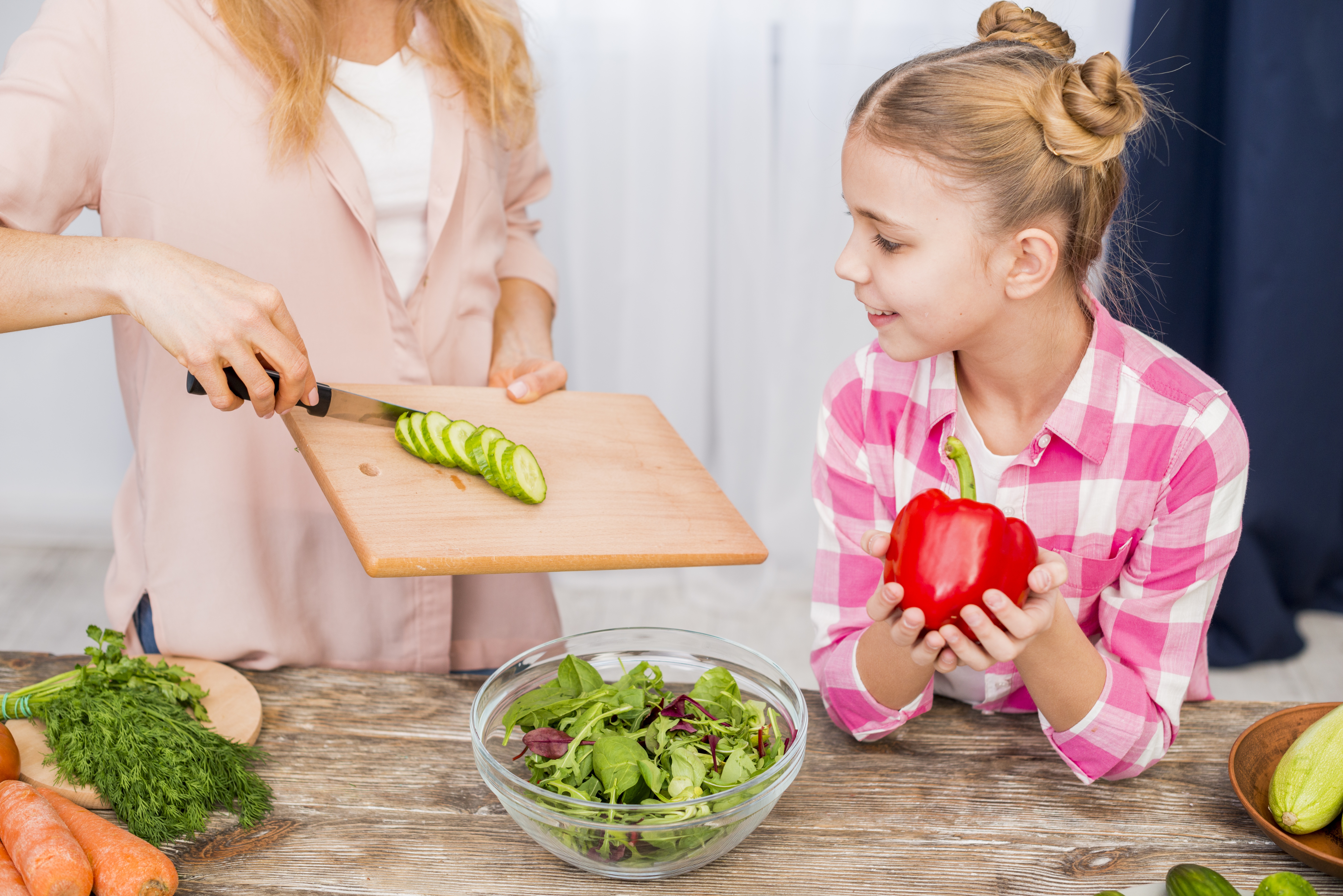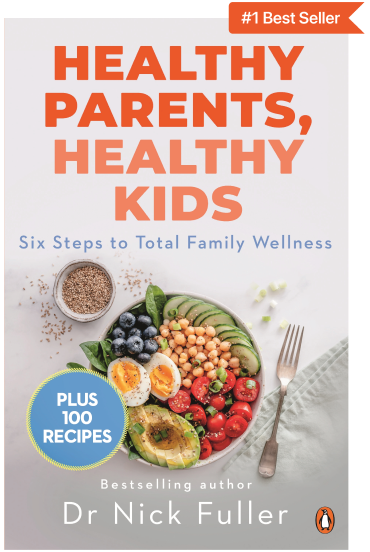Hidden Veggies For Kids: Sneaky Ways to Boost Nutrition Easily

Dr Nick Fuller
Leading Obesity Expert at the University of Sydney and founder of Interval Weight Loss.

Getting kids to eat vegetables can sometimes feel like an impossible mission. Yet, veggies are packed with essential vitamins, minerals, and fibre that support growth, immunity, and overall health. The problem? Most Aussie kids aren’t hitting their daily veggie targets.
Around 96% of children and adolescents aged 2–17 fail to meet the recommended daily servings of vegetables according to the Australian Institute of Health and Welfare. For parents navigating picky eating, ‘hidden veggies’ can be a clever trick to boost nutrition without battles at the dinner table.
This guide discusses why kids resist veggies, which ones are easiest to sneak in, and practical techniques to make veggies a stealthy part of your child’s diet.
Tired of Hiding Veggies in Meals? Learn Smarter Strategies That Work.
Sneaking vegetables into meals only works for so long. Dr Nick Fuller’s Healthy Parents, Healthy Kids teaches parents how to build a positive relationship between kids and veggies, without all the hiding and trickery. His techniques help children accept and enjoy vegetables in a natural, stress-free way.
End the veggie battles for good. Grab your copy of Healthy Parents, Healthy Kids today and start building lasting healthy habits.
Why Kids Need Their Veggies
Vegetables are more than just side dishes. They’re nutritional powerhouses. According to the Australian Dietary Guidelines, children aged 4–8 should aim for 4–5 servings of vegetables daily, while those aged 9–13 should get 5–5.5 servings.
Vegetables provide vitamins A, C, K, folate, and minerals like potassium, all crucial for growth and bone health. They also supply fibre, which supports healthy digestion and helps maintain a healthy weight. Studies show children with higher vegetable intake have better cognitive development and reduced risk of chronic diseases later in life.
Despite this, many children fall short. This is where hidden veggies come to the rescue. They help children get essential nutrients without the stress of forced eating.
Why Kids Resist Veggies
Getting kids to happily tuck into a plate of greens isn’t always easy. There are several reasons why veggies get a bad rap among little ones.
Bitter or earthy taste
Some vegetables naturally taste bitter, like broccoli, kale, or spinach. Kids are more sensitive to bitter flavours than adults, which can trigger rejection. According to research, early exposure and repeated tasting can help children adapt, but the initial resistance is very real.
Strong smell
A sharp or pungent smell, like that of cauliflower or Brussels sprouts, can be off-putting. Kids’ olfactory senses are heightened, so strong aromas can immediately signal 'yuck' before they even taste the veggie.
Texture feels 'weird'
Some vegetables have textures that are unfamiliar or slimy to children, such as cooked mushrooms or cooked zucchini. This unfamiliarity can create reluctance to try new foods, but repeated exposure helps. Children gradually accept new textures as their chewing skills develop, often becoming comfortable with firmer or more complex textures between 12 and 36 months.
Bright colours trigger suspicion
Oddly coloured veggies, like purple cabbage or orange pumpkin, can be visually suspicious. Children often associate bright colours with candy or 'unsafe' foods, making them hesitant.
Fear of new foods
Neophobia, or the fear of new foods, peaks in early childhood. It’s a normal developmental stage but can make introducing vegetables a challenge.
Preference for sweet or salty flavours
Many kids naturally prefer sweet and salty tastes, which vegetables often lack. This preference can make vegetables less appealing compared with processed snacks.
Negative experience with a veggie
Past negative experiences, like being forced to eat a disliked veggie, can create long-lasting resistance. Positive exposure and hidden vegetable strategies can help reverse these aversions over time.
Veggies You Can Sneak Into Meals
Not all vegetables are created equal when it comes to sneaky nutrition. Some are naturally sweeter, softer, or more versatile in dishes, making them perfect for hiding.
- Carrots: Carrots are naturally sweet and blend well into muffins, pasta sauces, and even meatballs. Their vibrant colour can brighten a dish without standing out in flavour.
- Zucchini: Zucchini is mild and soft when cooked, making it ideal for grating into pancakes, breads, or fritters. Its neutral taste helps it disappear into most savoury and sweet recipes.
- Spinach: Spinach is nutrient-dense and wilts down significantly when cooked. Pureeing it into sauces or blending into smoothies makes it almost undetectable.
- Cauliflower: Cauliflower can be transformed into mash, rice, or hidden in sauces. It’s an excellent low-carb, high-fibre alternative that adapts well to many flavours.
- Sweet potato: Naturally sweet, rich in beta-carotene, and soft when cooked, sweet potato can easily replace potatoes or be baked into snacks and patties.
- Pumpkin: Pumpkin’s smooth texture and natural sweetness make it ideal for soups, muffins, or sauces. Its mild taste means it blends seamlessly into both savoury and sweet dishes.
- Butternut squash: Similar to pumpkin, butternut squash works well roasted, mashed, or pureed. Its creamy texture adds moisture to baked goods and sauces.
- Beets: Beets add vibrant colour and a sweet, earthy flavour. Roasted or pureed into sauces, they can be disguised in burgers or cakes.
- Broccoli stems: While the florets may be strong-tasting, the stems are mild and can be grated into fritters or pasta sauces. They add fibre and nutrients without the intense taste.
- Peas: Sweet and soft peas are perfect for mashing into dips, sauces, or baked goods. Their flavour often goes unnoticed in mixed dishes.
- Kale: Kale can be blended into smoothies or finely chopped into sauces. Its high nutrient content makes it worth the effort, even if subtle in taste.
- Avocado: Creamy and mild, avocado can be added to smoothies, spreads, or desserts for a boost of healthy fats and vitamins.
- Mushrooms: Finely chopped or blended, mushrooms lend umami flavour to sauces, meat dishes, or veggie patties.
- Bell peppers: Mildly sweet when roasted or sautéed, bell peppers can be diced or pureed into sauces, soups, or omelettes.
- Cucumber: Cucumber works well grated into salads, sandwiches, or dips. Its mild flavour makes it versatile for snacks.
Not sure what veggies to pick for your little ones? This video guide makes it super easy to know what to choose.
Practical Tips to Hide Veggies in Food
Once you’ve chosen your stealthy veggies, it’s time to get creative. There are countless ways to incorporate vegetables without anyone noticing.
Puree into sauces or soups
Blending veggies into tomato sauces, curries, or soups adds nutrients without changing the overall taste or texture. A study found that children are more willing to try vegetables when they are blended into familiar dishes.
Grate into batters or fillings
Grating zucchini, carrots, or sweet potato into cakes, muffins, and pancakes increases veggie intake while keeping flavours balanced.
Finely chop and sauté
Sautéing finely chopped vegetables softens texture and mellows flavours, allowing them to blend into dishes like pasta, stir-fries, or fried rice.
Mash into comfort foods
Mashed pumpkin, cauliflower, or sweet potato can be stirred into mashed potatoes, risottos, or creamy polenta. The creamy texture hides the veggies perfectly.
Swap with veggie alternatives
Use cauliflower rice, zucchini noodles, or mashed sweet potato in place of traditional carb-heavy ingredients. This increases nutrient content and reduces refined carbs.
Bake into treats
Veggie-based muffins, brownies, or cookies let kids enjoy sweet treats while getting extra vitamins. Carrot cake is a classic example that works every time.
Layer inside dishes
Lasagne, shepherd’s pie, or casseroles are perfect for layering veggies between familiar ingredients, making them almost invisible.
Stuff into patties or nuggets
Mix finely chopped or grated veggies into meatballs, patties, or nuggets. The texture and taste blend seamlessly with protein.
Blend into smoothies or milkshakes
Spinach, avocado, pumpkin, or beetroot can be added to smoothies or milkshakes. The sweetness of fruits usually masks the taste entirely.
Roll into wraps or quesadillas
Thinly sliced or grated vegetables can be tucked into wraps, quesadillas, or sandwiches. Kids often enjoy the novelty of rolled foods.
Spread as dips or sandwich spreads
Pureed veggies like pumpkin, carrot, or beetroot make colourful and tasty spreads. Pair with hummus or yoghurt for extra flavour.
Freeze into popsicles
Veggies like carrot, pumpkin, or beet can be blended with fruit juice or yoghurt and frozen into popsicles, a fun, nutrient-packed snack.
Struggling to sneak veggies into your kids’ meals? Discover clever ways with Top Hidden Vegetable Recipes For Picky Eaters — tasty, fuss-free, and kid-approved.
When to Stop Hiding Veggies
While hidden veggies are a great start, the ultimate goal is for children to recognise, accept, and enjoy vegetables on their own. Gradually introduce whole veggies alongside hidden versions, encourage tasting, and offer positive experiences without pressure.
Studies suggest repeated exposure, 8–10 times per new food, can significantly increase acceptance. Slowly reducing reliance on hidden methods helps children develop a healthy relationship with vegetables and a lifelong habit of eating a variety of foods.
Wrapping Up
Hidden veggies aren’t about trickery. They’re about creating opportunities for children to get essential nutrients in a way that fits into busy family life. With clever choices, creative techniques, and patience, even the pickiest eaters can enjoy a variety of vegetables.
Start small, mix them into familiar dishes, and gradually build confidence in whole foods. Over time, hidden veggies can pave the way to a future where kids enjoy vegetables as a normal, tasty part of everyday meals.
Stay informed with fresh tips, expert guidance, unique deals, and tailored support!
Meet Dr Nick Fuller
My Story
As a father, I know first-hand that raising healthy and happy children is tricky. Children are fussy, particularly at the end of the day when they are shattered. We also live in a society where companies seek to profit from what we feed our kids; incorrect and damaging advice is pushed on us and marketed towards our children, and we have no time.
But with these recipes and resources, you and your children can enjoy simple and well-founded food and lifestyle choices for lifelong health.

About Dr Nick Fuller
Dr Nick Fuller is the founder of Interval Weight Loss and is a leading obesity expert at the University of Sydney with a Ph.D. in Obesity Treatment. Dr Fuller is also the author of three best-selling books and his work been published in top ranked journals in the medical field, including JAMA, Lancet and American Journal of Clinical Nutrition.
